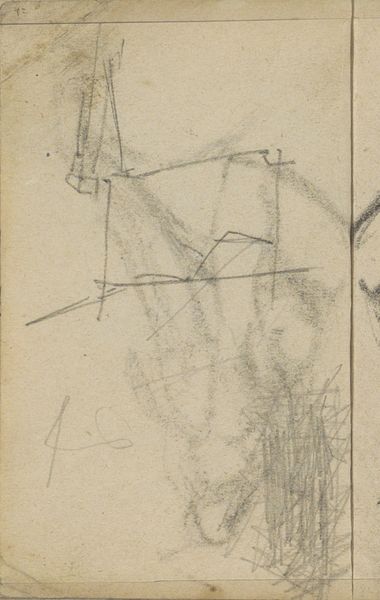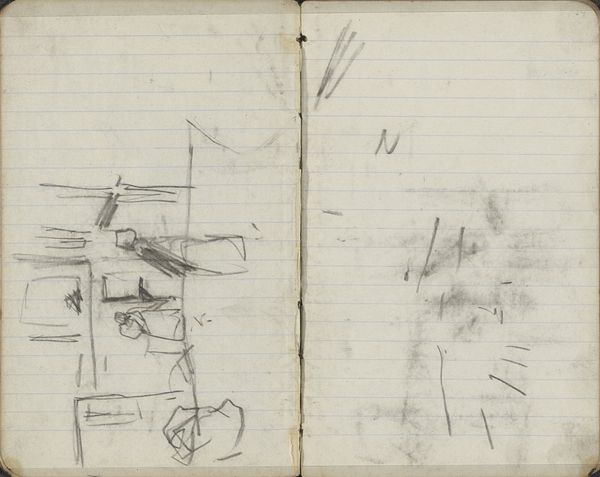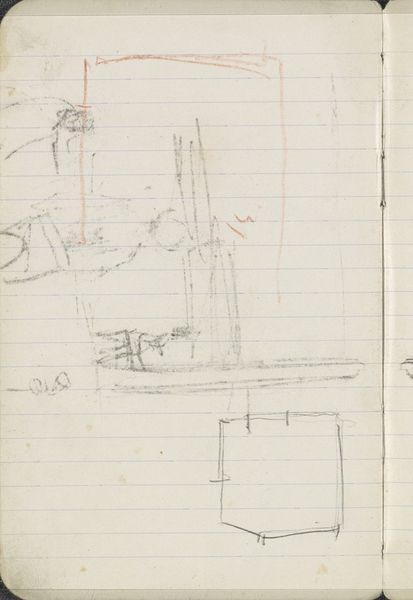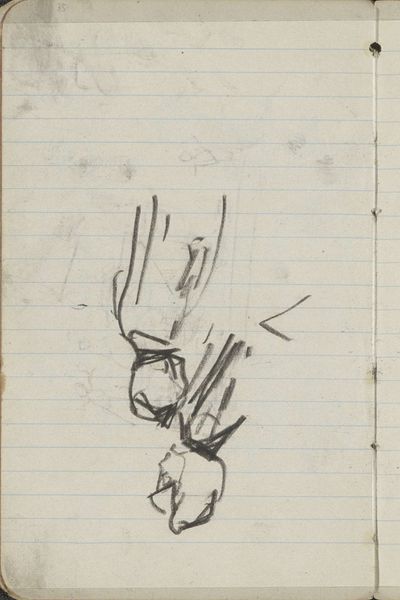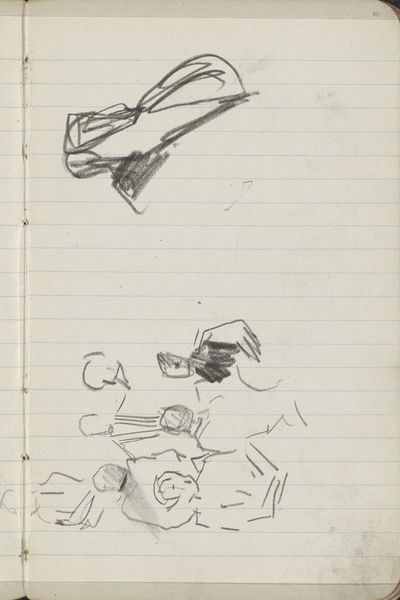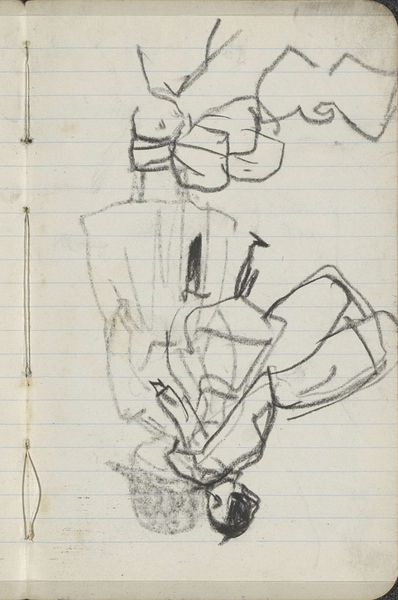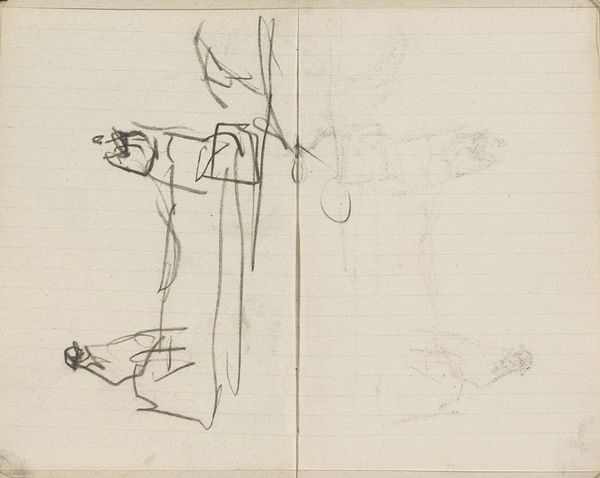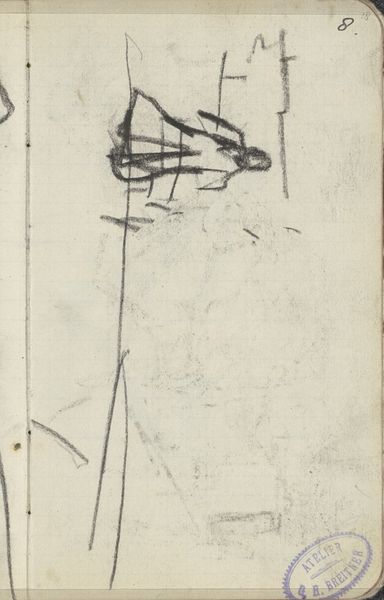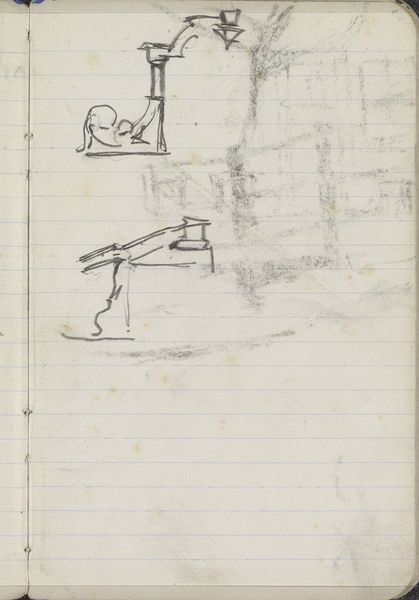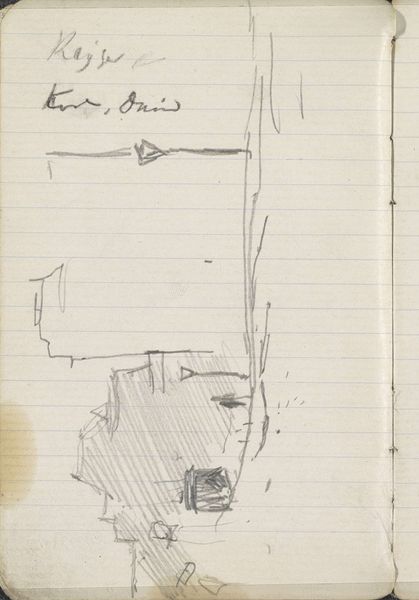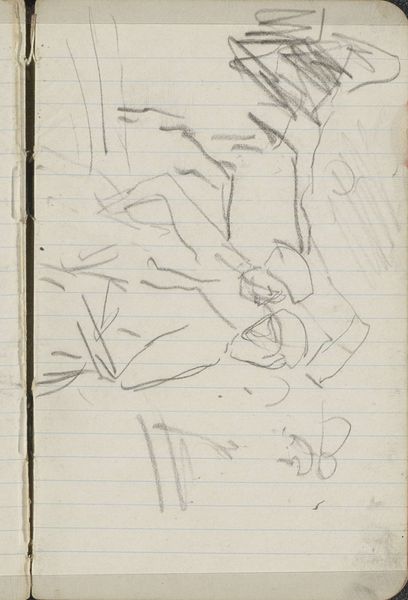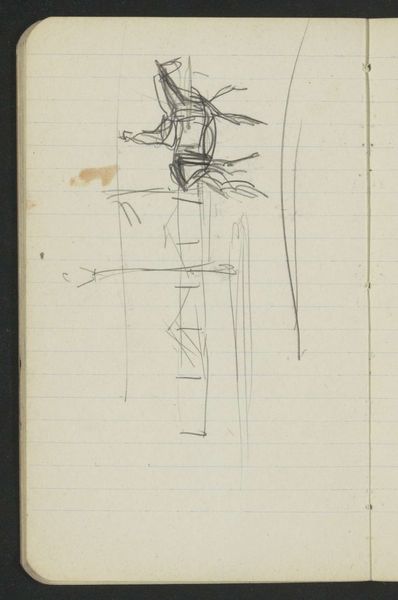
drawing, pencil
#
drawing
#
form
#
pencil
#
line
#
cityscape
#
building
Copyright: Rijks Museum: Open Domain
Curator: Welcome. Here we have a sketch by George Hendrik Breitner, titled "Dak van de Nieuwe Kerk te Amsterdam," dating from 1893-1894. It is currently held at the Rijksmuseum. Editor: My first impression is that this pencil drawing, on what appears to be notebook paper, gives us a surprisingly intimate glimpse into the architectural details of Amsterdam. Despite its sketch-like nature, the skeletal structures of the roof suggest monumentality and grandeur. Curator: Indeed. Breitner’s use of line, particularly the rapid, almost frantic strokes, creates a sense of immediacy. We see Breitner's fascination with form. Notice how the geometric shapes intersect and overlap, forming a complex interplay of angles. Editor: Absolutely. However, what's compelling to me is considering the social and economic factors at play in Breitner's Amsterdam. The New Church was, and is, inextricably tied to the Dutch monarchy and moments of national significance. It's worth asking how such an unfinished, stark rooftop might reflect the rapidly industrializing world below, a world teeming with disenfranchised communities also vying to claim the future. What voices are conspicuously absent from these rafters? Curator: A valid point, although the visual economy of the sketch interests me. Breitner does not offer a perfect perspectival rendition; instead, we see only critical lines which gives rise to an almost abstract study. We are compelled to contemplate spatial dimensions without any burden of unnecessary representational detail. Editor: Yet it begs the question of who had the privilege to even contemplate these views of Amsterdam undisturbed, removed from street-level existence. While the marks may feel informal and immediate to you, they come from a body already positioned within systems of power. The lack of surface details suggests the inaccessibility of this kind of reflective privilege. Curator: I find it rather brilliant that such few lines give such vivid form. The composition almost becomes sculptural, highlighting its skeletal aesthetic. The artist does not seek to give us anything besides what we strictly need to see. Editor: I agree it provokes powerful associations between economic mobility and seeing, especially from certain heights within society. Thank you, it makes you really think. Curator: A rewarding example of line meeting form.
Comments
No comments
Be the first to comment and join the conversation on the ultimate creative platform.
